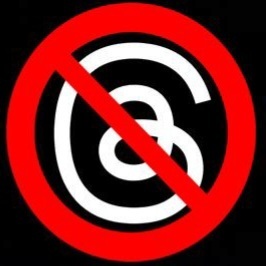What purpose does American cheese serve? What problem does it solve?
Aight, lets set some terms.
A lot of what people call American cheese, isn’t. But the term has become used for anything yellow and in a package, despite there being regulations about what is and isn’t allowed to be called cheese.
So I’m not going to waste time covering all of that, and I’ll focus on the versions that are cheese, or at least were at one point.
So, waaaaay back, long before processed cheese was a thing, American cheese existed in other usages. As far back as colonial days, “American” cheese was just the term the English used for cheddars or other cheeses made in the colonies that also existed in England.
Time passes, and it turns out that American cheese makers grew in skill and range. But there was still “American” cheese. This was usually a form of mild cheddar, often uncolored. You can still find that kind of cheese, if you don’t mind it being called mild white cheddar.
So, some bright lads in Switzerland were looking for a way in the early 1900s to make cheese more shelf stable. They were not the only ones, but they were the first. They used ementhal.
Here in the states, James Kraft was working on the same thing, but found a different way there, and using a different base cheese. That base cheese? A mild cheddar.
Essentially, the process in “processed cheese” is taking actual cheese, heating it, stirring it, and adding an emulsifer. That’s it. The process just takes regular cheese and makes it both shelf stable, and smoother.
Essentially, when you make any given cheese sauce for something like homemade mac n cheese, and you use flour as the emulsifier, you’re doing the same thing to it. It isn’t as shelf stable, obviously, but you’re processing the cheese.
So, Kraft not only made shelf stable cheese, he did it using “waste” cheese. When you’re cutting cheese up for shipping and sale, you end up with little chunks and slivers that are not saleable as they are.
This meant that Kraft’s process was inexpensive to produce overall, though it did eventually stop being made of only waste cheese. That led to what’s still called “government cheese”. It was literally given out by the government in various ways.
Now, the ugly side of things.
Even cheese waste is more expensive than oil and chemicals. So the Kraft company (and pretty much every other mass cheese making company) started fucking with it. Adding in more than just cheese, emulsifiers, and stabilizers. There’s shit on the market that gets labeled now as “American slices”. But that shit ain’t cheese any more than vegan cheese is. That gradual race to the bottom by international conglomerates looking to give as little value in their products as possible fucked up the “American cheese” goodness.
And the original processed cheese was a boon. Shelf stable even without refrigeration, well blended for use in multiple applications, and meeting a bare minimum of flavor requirements. It’s the shit that came later that developed the reputation that tarnished all processed cheeses.
If you go shopping, you can still find real cheese that’s been processed. Look at the label. It should have nothing but cheese, sodium citrate (or a similar chemical) and maybe something like tocopherol (aka vitamin e) as a preservative. That’s it. That’s all the good stuff has. There may be annato listed as a colorant, since that’s how many cheeses are made yellow.
Typically, you’ll only find it in the form of a blend of cheddar and Colby, selected for a mild flavor and easy, consistent melting. Salt levels can be higher than with an unprocessed cheese, so check for that if you’re sodium restricted.
But what purpose does it serve? The same as any cheese. It just does it while melting in a smooth, homogeneous way, and lasts longer without going bad
It can also reduce waste, though it has become a product in such demand that chest is produced in quantity just for processing. But there are smaller dairies that process their own out of waste pieces. My uncle used to do so, though after he retired, my cousin took the farm a different way and reduced the things they sell, so he only supplies the family now .
The problem processing solves has already been covered, but I’ll sum it up again. It solves shelf stability as the primary, with melting ease being a secondary benefit. The process using heat means that the cheese is pasteurized when it’s finished. So it can sit for very long times compared to unprocessed cheese, and even longer than that refrigerated (which also extends unprocessed cheese life)
Refrigeration does solve storage life for unprocessed cheese as well. And, it is dead simple to add emulsifiers when cooking, so the melty factor isn’t as big a deal as it used to be.
It is also a very good option when you want a mild, even, predictable taste.
So, check your labels. Make sure you’re getting actual processed cheese rather than “cheese food” or (gods forbid) “american slices”. That being said, “cheese food” is still mostly cheese, and the rest is typically going to include more dairy products than other things . Those shitty “slices” have no cheese at all, and are not allowed to call themselves cheese here in the US.
Now, this is already long, and there’s going to be some short attention span asshole complaining about it.
But let me finish with a fact. All cheese is processed. Period. The only differences are in exactly what processes are used. You take milk, and you use chemicals (be they sourced from something “naturally”, or via a lab) to change that milk. Rennet isn’t exactly dripping from trees, ya know. It is not somehow superior to sodium citrate by virtue of originally being taken from calf stomachs.
Oh, you didn’t know that’s how cheese is made? Yeah. Back before labs, rennet was a side product of calf processing. But no matter what’s used to do it, you can’t make cheese without curds. And making curds means curdling milk. Which is inherently a chemical process.
What are the worst offenders that we should be looking out for? Anything with Pasteurized Prepared Cheese Product? “American Slices”?
Do these things even have cheese at all? Or is it all just textured vegetable oil?
Personally, anything labeled “product” or “slices” isn’t worth the money. However, the stuff labeled “product” can be okay for something like a grilled cheese if the budget is tight. It will melt, and there is some flavor there.
The stuff labeled “slices” doesn’t even melt right at all, and is almost always cheeseless, replacing that with processed oils and trace amounts of dairy products. The worst of those are nothing but oils, colors, and some artificial flavoring.
As always, check your labels. The ingredient list will usually be an accurate guide, whereas front labels sometimes use font sizes and design to hide exactly which designation it is.
Ffs, are you talking about Kraft Singles, or not?
Which version? Kraft makes several types. That’s the point of focusing on labeling and ingredients, so that no matter what their marketing department changes, anyone that cares can find what they actually want.
Serously. Kraft makes something like 5 sliced cheeses for different markets. Might even be more than that.
That being said, I did the work for you, despite the sense of entitlement.
The Kraft “American cheese slices” that have a front label that says “kraft singles”, and specifies 2% milk is a cheese product rather than a pasteurized processed cheese. The ingredient list of cheeseless, but does include dairy.
The “deli deluxe” has cheese as the first ingredient, and has added water and milk alongside the standard emulsifiers, colorants, and preservatives. It is American cheese rather than a cheese food or a cheese slice, though it obviously isn’t as good as it once was. Years ago, when they came out with the deli deluxe, it was only cheese, sodium citrate, and salt. The cheese itself had the colorants, but no extra preservatives.
The Kraft singles branded without the specified 2% milk on the front has cheese as an ingredient, but it is the second ingredient, with the first being milk. It also has a longer list of ingredients, including dairy products. This it in between the other two, and (iirc) is classed as a cheese food.
Out of those three, the deli deluxe is as close to the original version James Kraft made as you’ll get today.
Having used all three at various points, the 2% is crap. It does melt well on a hot sandwich, but fails in other applications because it gets a little separated over time when heated. The non 2% labeled is fine for most purposes, and has a better taste imo. Both the non 2% and the deli deluxe can be used for cheese sauces that include other cheeses, as there’s enough sodium citrate to emulsify a decent enough amount of unprocessed cheese.
Imo, the best option available at a chain grocery is boar’s head. It’s essentially the bare minimum of ingredients for yellow American cheese. Barring that, the Kraft deli deluxe is the best commonly available brand. I haven’t tried every brand out there, and not all brands are available everywhere, so there may be plenty that are as good as boar’s head, and I just haven’t had them.
Out of the chain stores, the only one I like is publix. Their basic cheese is the same as deli deluxe. harris teeter, and giant eagle are acceptable, as well, but publix melted the best and tastes the best to me. The rest of the chains fell short in other ways, or didn’t even have cheese as an ingredient.
Borden sucks. Worst name brand cheese I’ve ever had.
Horizon organics is crap too. You’d think a brand focused on organic milk would do better, but it’s bland and melts poorly
Can’t recall any other brands that stand out.
If you’re not already a native I think you’ve earned the status of honorary Wisconsinite Cheesehead for your dedication.
Now that’s a honor :)
The good stuff is what you get if you actually go up to the deli counter and ask for American cheese. Anything where the slices are individually wrapped is pretty much just slightly firmer velveeta.
Great Value slices don’t melt on the BBQ
Some slices melt in one temperature range and sort of plasticize in another. That said, if you have it sitting on a burger and not holding it in the flame of a propane torch, it should melt. If it doesn’t, like light cheese where I live, there are better options out there.
There’s an entire food science behind flavor and melt temperature for processed cheese products. The cheese used at nearly every large fast food chain are not off the shelf options like you have at the store, they are custom made for their specific methods and product line. What melts well with a broiler won’t be the best with a flat top.
I really didn’t think I’d be reading such a good write-up on cheese, but that you for that!
Excellent writeup!
Thank you for typing this out. Very interesting read!
I’m not sure why you mention government cheese here. Government cheese was cheddar, and not made from waste products/offcuts. It’s entirely unrelated, but fascinating story.
The government cheese I’m aware of was American. It was made from cheddar, a mild unaged cheddar, but was processed. Now, maybe there were regional differences, I don’t know about that. But I know it was here, and all of the common sources I used to verify my memory specified that it was the low cost/calorie density ratio of American cheese that led to it being distributed.
Thank you for that. Very interesting!
Can you get American Processed (the good, non-Kraft type) in Canada? Everyone always says Velveeta or Kraft Singles but those are all garbage
Some vegan cheese is actually cheese. Same microorganisms, same process. If it’s not cheese then any number of other things you’d like to call cheese aren’t either.
It’s not made from milk though, right? It wouldn’t be vegan if it has any animal products. And if it isn’t made from milk, it’s just not cheese, even if the microorganisms are the same.
No, no, it isn’t. By definition, cheese is a dairy product. It doesn’t have to come from cows, but it does require milk from an animal. Ergo, cheese cannot be vegan, which means that vegan cheese is an oxymoron.
Edit:
Found a site that links to a pdf covering what is and isn’t a cheese, legally. www.cheesesociety.org/events-education/cheese-definitions, and covers some of the terminology around cheese and cheese making.
If anyone can’t find an online dictionary like Webster’s, the oed, or other generally accepted authoritative source to see the range of standard definitions outside of regulatory of industry terminology, well, you probably shouldn’t be online at all. But, even the ones that include fake cheeses will state that it’s a non standard usage.
Plus, you can call smegma dick cheese all you want, but it’s still not actually cheese.
I vote you can say that about vegan yogurt, but not vegan cheese. Yogurt is much more defined by the culture vs the medium compared with cheese.
Melting without breaking. It’s cheese and emulsifier mixed together so the oils don’t separate out. People often use egg for the same reason when making cheese sauces.
It was developed specifically to melt perfectly on burgers. As a cheese enjoyer I’ll tell you, American cheese is not bad, but it’s only good for two things: on burgers, and in grilled cheese sandwiches paired with tomato soup. Anyone that’s so snobbish as to not recognize these uses, is not fit to dine on the cheese they’re so full of.
Nile Red recently made some Kraft singles style cheese. It’s not plastic, y’all.
It just melts easier without separating. If you melt straight cheddar, you end up with a fuckton of oil floating on top and it’s generally not very good as a sauce by itself. Singles are basically just a cheese bechamel sauce that can solidify for shelf stability
What I find funny about this “it’s plastic!” claim* is that it’s… arguably correct. Except that by that definition every single type of cheese would be a plastic.
At the end of the day, a “plastic” is any synthetic material that is made from a polymer, that you can shape or mould into an object. And while casein (main component of cheese) might be quite complex, as proteins typically are, when it comes to cheesemaking you can simply see it as a proline polymer with some junk added it.
*or a similar claim that I see often in Brazil, regarding a local cheese (queijo prato) being plastic too.
The issue is that “plastic” has multiple meanings.
Cheese is plastic the property.
Cheese is not plastic the oil product.
Yup, it does have multiple meanings. That’s why I said “arguably”.
When people say “it’s plastic!”, they’re usually conveying that it’s made from inedible stuff, I’m aware that they don’t mean “it’s made from a polymerised substance that has been moulded while it still had some plasticity”.
It’s a bit of off-topic but your comment made me realise that it’s theoretically possible to create cheese out of petroleum, air, and salt. It would be expensive and awful-tasting, but probably edible?
I might do the synthesis route of that just for fun.
It might no even taste awful. Petroleum has a lot of interesting compounds that you could probably convert into flavor molecules if you could isolate them. This isn’t an endorsement of the practice, but chemistry is pretty cool.
The highest quality American cheese is cheddar and Colby melted and mixed with sodium citrate, which serves to keep it from splitting when melting.
It’s a perfectly reasonable thing to do, and if you’ve had a nice macaroni and cheese it was quite possibly made with a similar process by the chef, since sodium citrate is a perfectly common cooking ingredient.American pasteurized prepared cheese product, aka kraft singles, aka American cheese as most people know it, is very affordable, and is engineered to melt good. It solves the problem of a lot of Americans know it’s crap but it’s not a “proper” grilled cheese sandwich like they had as a kid with anything better, and the same goes for cheeseburgers.
The original American cheese was a cheddar made in America made with annatto because we didn’t have the bacteria that made cheddar have it’s color.
But most of your question is answered by “it’s cheap to make and buy, and for whatever reason a lot of Americans like it”. Most of what people call American cheese isn’t actually even labeled as such, which makes these conversations fun. It’s usually labeled “singles American flavor”. No one buys the other stuff though, because it’s slightly more expensive, by nearly 50¢.
I won’t touch “pasteurized processed cheese food,” but goddamn do I love some deli American cheese. On occasion, I can find an extra sharp one, for great justice.
Worry not! Most modern American flavor singles no longer meet the criteria to be called a pasteurized processed cheese food, and are strictly called “pasteurized prepared cheese product”, which is a legally meaningless string of words that only advertised that it contains cheese, and is pasteurized.
It’s a vaguely surreal labeling situation.
It’s a shame that a lot of people don’t realize that “processed cheese” usually just means “melted”, not “chemical nightmare”.
Your post made me curious, so I did a quick search. Apparently, to qualify as cheese, American cheeses only need to be 51% cheese. Not that this is probably the best source: mashed article
So that article is indeed a little “shock bait”-y. I skimmed the FDA regulations to the best of my ability.
There’s actually three four types: Processed cheese, processed cheese food, processed cheese product, and prepared cheese product.Processed cheese is around 90% cheese. It’s what you get if you melt cheese and add anything to it to keep it from splitting, as long as it’s not much at all, and the additive is something like “cream”, an acidic salt or something like that.
Processed cheese food is the same, but you can use more other ingredients, and a wider variety, like dehydrated milk, and it has to be at least 51% cheese.
Processed cheese product is the same as processed cheese food, but can be less than 51% cheese.
Prepared cheese product has no FDA standard of identity and can contain anything FDA approved for consumption in any proportion, as long as there’s something in the ingredients that’s cheese.
The best part is that you can find all of these right next to each other at the store, and they’ll all look and be casually called “American cheese”.
Kraft singles are the latter, because they got in trouble for using an additive that the FDA doesn’t consider a dairy food (milk protein concentrate).
Most other “singles” are food or product.
The non individually wrapped slices or bricks are most likely to be just “processed cheese”. They might also be called “deli style” so they can charge a little more.Thank you! I was wiped out after driving a disabled neighbor around all day yesterday so I didn’t put much effort in my search. Like beer, I call it “cheese” with caution. I don’t know that any American-produced cheese actually uses rennet rather than whatever chemical imitation. I am well aware there is a huge difference in taste, having had the opportunity to have had imported cheese a time or two. But I obviously don’t buy it, with budgetary and other constraints. I’ve recently started buying American produced cheese either sliced, or block to shred myself. It’s just better without cellulose and rx antifungal.
Oh, there’s plenty of American cheeses that are basically the same as any other European cheese, but we have the difference that we either need to use pasteurized milk, or age the cheese at least 60 days.
We had a much worse time with listeria outbreaks around the time that food safety regulations were being put together, so our rules are a lot more strict for dairy products.This can impact the flavor, but honestly the reason imported cheese tends to be better is because you don’t import cheap cheese, you import nice cheese.
Cellulose is only in shredded cheese, and it’s benign. It’s naturally occuring in every plant, and humans can’t digest it. It’s commonly referred to as “dietary fiber”, which is why they can use it as an anti clumping agent in shredded cheese. You’re already eating it and it’s entirely inert.
Antibiotics are also a bit overblown in the US. When it comes to what arrives to the consumer, the US and the EU have compatible regulations. The biggest difference is actually cow breed, which impacts milk composition.
They’re compatible largely because of trade pressures applied. And pre-shredded cheese wreaks havoc on my stomach. I’ve had stomach issues for most of my life so imo a happy gut is a happy me.
It’s my understanding that “cheese food” is a technical term similar to “cheese product” but is actually worse than “cheese product”.
Processed cheese product means it’s less than 51% cheese, and processed cheese food is more than 51%.
The key part is that there’s no definition for “prepared cheese product”. The regulations are specific in the wording, and even the text layout that you can use.
The reason for the switch is the inclusion of milk protein concentrate, which the FDA doesn’t list as an acceptable dairy additive for anything that wants to label itself cheese of any type.
Well, back in my day …
It melts very smoothly, so it’s great for cheeseburgers, Mac and cheese, and other melty dishes. Adding a little American cheese will allow other cheeses to melt smoother too!
It’s just the sodium citrate. You can order that stuff and make any cheese melt nicely with just a little bit of it thrown in. You don’t have to mix American cheese in to make nice melty cheese. I now make a delicious queso (a decent copy of the one from Moe’s), and another similar recipe but instead of pepper jack and cheddar I use Monterey and cheddar and add rosemary. Spreads great cold on crackers like a Brie would. American cheese would not pair well with either of these.
From what I get (I’m not from USA nor Switzerland), it’s simply a cheese derivative. Originally developed in Switzerland by two guys trying to increase the shelf life of Emmenthal through sodium citrate.
People using it nowadays might be doing it for a thousand reasons, such as being easier to melt, easier emulsification (that’s convenient for fondue), or perhaps because it’s cheaper.
I personally don’t use it because I don’t see the point*, given that the prices locally are comparable to cheese, and I like traditional cheeses better. That said I don’t see any big deal against it.
*for fondue and cheese sauces: squeeze some lime juice in it and here we go. You’re actually adding citric acid instead of sodium citrate, but given its buffer effect the difference is not a big deal.
is that lime juice in non-american cheeses to get american cheese-like properties? I don’t need an excuse to add lime juice to anything I’m just trying to understand
Yup. It’s to prevent the fondue or cheese sauce from splitting. It’ll also give it some citrus flavour but IMO that’s a bonus.
-
It’s cheaper to make because it contains more water, while still vaguely tasting like an aged cheese.
-
It melts consistently and evenly
That’s about it. It makes a good mix in for things like queso or fondue, because the melting salts they use to make it will stabilize the mixture quite well, and the real cheese yih use will be the flavor.
Other than that, there is no point, unless you can’t afford real cheese.
-
It’s very convenient and tastes good enough. Simple as that.
American cheese is the best cheese for a cheeseburger because it melts without splitting!
It makes Americans feel like they’ve contributed to the global gastronomy.
James Kraft was born in Canada, moved to the US in 1902 and invented the cheese in 1903.
I dunno, I don’t think it’s long enough to count. That shit is Canadian.
He knew full well Canada wouldn’t let this fly. He had to be in the United States to spawn this.
Lol yea you gotta point.
Everyone always asks why is American cheese, but never how is American cheese.
Awful.
Hunger.
That’s just a simple Google search. I browsed this link & it seems acceptable enough. I also learned something new along the way: American cheese was formulated, discovered in Switzerland.
TL;DR Long shelf life cheese, exceptionally good for military purposes, some people somehow prefer it or get nostalgic for it.
Great article.
That being said, Five Guys’ Kraft American cheese isn’t the same as the Kraft singles you can pick up at your local grocery store; it contains a higher percentage of cheddar cheese and butter, giving it that same craveable melt paired with the punch of saltiness from cheddar.
Sneaky bastards! I knew they had a secret ;-)
Frankly, it’s just a superior cheese for quite a lot of things.
Taiwanese breakfast food.
Those brilliant bastards made me buy american cheese, on purpose, to eat.
Danbing is made with a chewy rice flour crepe, very thin. Crack an egg on a frying pan. Break the yolk with chopsticks and swirl a bit. Mixed but still distinct, not scrambled. Put the crepe on top. Fry the egg a bit. Flip. Put american cheese on top of the egg. Let the crepe side cook a bit while the ‘cheese’ starts to melt. Roll it up. Slice the roll so the cross section is 3 spirals of chewy crepe, fried egg and melted cheese. Eat by the slice.
I don’t know why american cheese makes it better but it really does. Real actual cheese that’s good just isn’t as good for danbing.
American cheese is good for melting, either in hot sandwich-like dishes, or as a sauce additive. If it melts, american cheese will probably be nice in it.
It makes more sense if you think of it as a congealed cheese based sauce, and not as cheese. It’s not cheese, but when melted can be delicious.

















